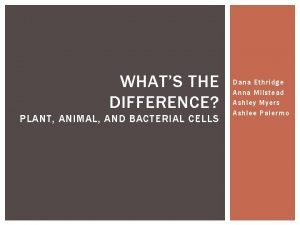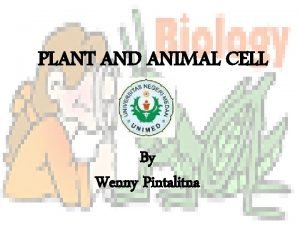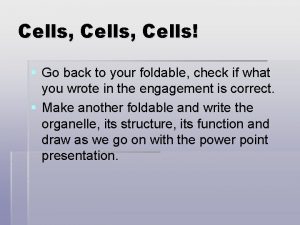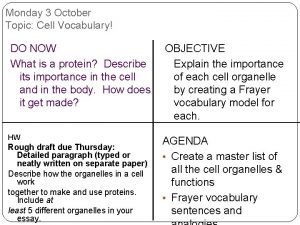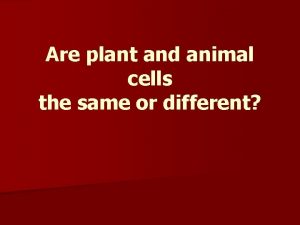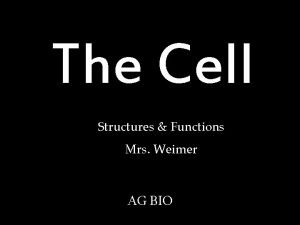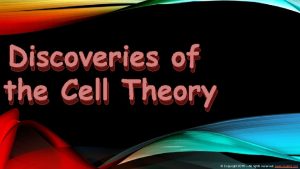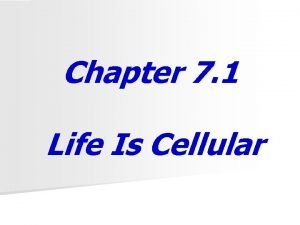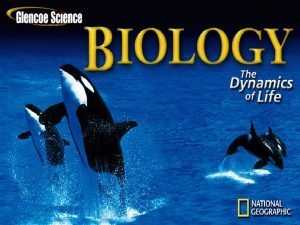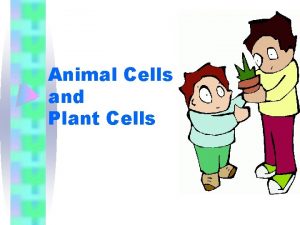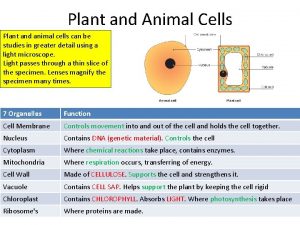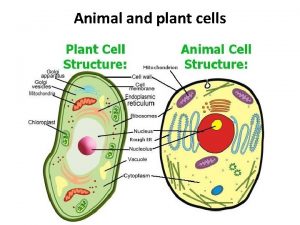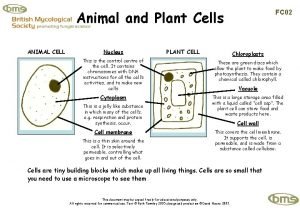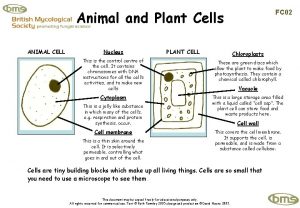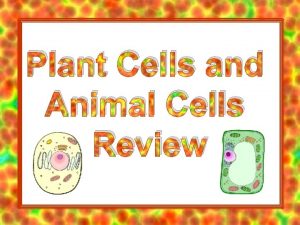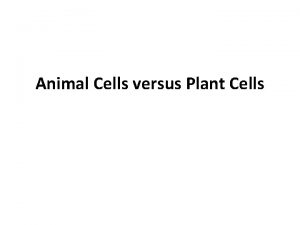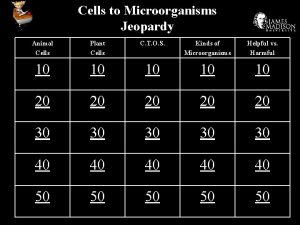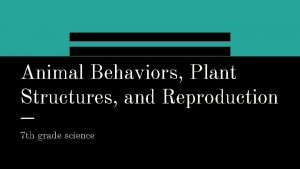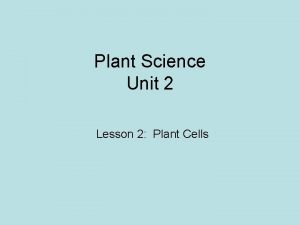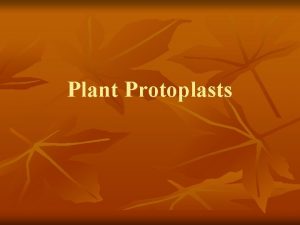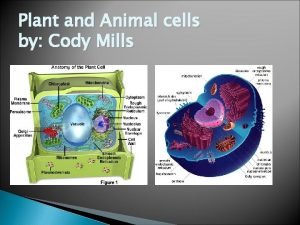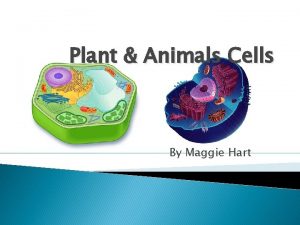Plant cells Animal cells Unit A Lesson 1

























- Slides: 25

Plant cells & Animal cells Unit A Lesson 1 Pages 32 -37

Objectives l l Introduction to plant and animal cells The class will explore the differences between the two types of cells

Cells l l The cell is the basic unit of structure and function of all living things. The size and shape of a cell depend on its function. All organisms are made up of cells. Organisms are living things.

Organelles and Their Functions Ø Cell Membrane: Membrane The purpose of the cell membrane is to hold the cell together. Ø Nucleus: Nucleus The NUCLEUS is like the brain of the cell. If you take the nucleus out of a Ø Chromosomes: Threadlike structures inside the nucleus that contain information about the characteristics of the organism. Ø Cytoplasm: Jellylike substance. Ø Mitochondria: Release energy from food. Ø Vacuoles: Vacuoles are bubbles that float in the cell. Those bubbles store the different molecules a cell needs to survive. Some contain food and others hold oil. There are even vacuoles that hold onto waste products. cell it dies. It is the thing that tells every part of the cell what to do. It even tells the cell when to divide.

Animal Cell

Plant Cell

Animal Cell Nucleus Cell membrane Rough ER Smooth ER cytoplasm mitochondria Golgi body lysosome

Organelles Only in Plant Cells Cell Wall: Wall Cell walls help the plant maintain its shape. Walls also help the plant keep its structure consistent Chloroplasts: Make food

Plant Cell wall Cell Membrane Chloroplast vacuole Mitochondria Nucleus Golgi Body

Chloroplast

Plant cells l Plant cells have different structures than animal cells l . Plant cells have something called a CELL WALL while animals do not. l Plant cells have an organelle called a CHLOROPLAST that takes energy from the sun and converts it into sugars. l Does your body make sugar from the sun or do you get it from food?

Animal Cells l Animal cells organize the body. You have brain cells, stomach cells, bone cells, and many other types of cells. Each is different from the others. l Nerve cells conduct electrical impulses through the body. There are cells in your intestine that absorb nutrients from the food you eat. Stomach cells secrete an acid to digest your food l Do you think that your skin cells can absorb the nutrients from your lunch? Why not?

Osmotic Pressure

Bacteria • One –celled • No nucleus • Some make their own food • Some feed on living or once living things

Protists l l l Most one-celled Make their own food or feed on once living things Examples: Algae, amoebas, diatoms





Body Organization Cells l Tissues l Organs l Systems l Organisms l

Get Out Your Remotes!

Get Out Your Remotes! Which has a cell wall? A. B. C. Plant Cell Animal Cell Jail Cell (Just Kidding!)

Which of the following are in plant cells only? A. B. C. D. Cytoplasm Chloroplas ts Mitochond ria Vacuoles

What is the basic unit of structure and function of all living things? A. B. C. D. Bones Organs Tissues Cells

Don’t you just love science? !?
 What is an organelle
What is an organelle Whats the difference between animal and plant cells
Whats the difference between animal and plant cells Venn diagram animal and plant cells
Venn diagram animal and plant cells Venn diagram of plant and animal cells
Venn diagram of plant and animal cells Plant cell vs animal cell
Plant cell vs animal cell Perixomes
Perixomes Simple vs complex carbs
Simple vs complex carbs Plant and animal cells
Plant and animal cells Plant and animal cells foldable
Plant and animal cells foldable Plant vs animal cells
Plant vs animal cells Whats the difference between plant and animal cells
Whats the difference between plant and animal cells Different parts of the animal cell
Different parts of the animal cell Differences between plant animal and bacterial cells
Differences between plant animal and bacterial cells Cell theory contributors
Cell theory contributors Nuclulus
Nuclulus What is the gooey liquid in plant and animal cells
What is the gooey liquid in plant and animal cells Lesson 3 animal body plans 2
Lesson 3 animal body plans 2 Lesson 2: animal body plans: 1 biology b unit 3: animals
Lesson 2: animal body plans: 1 biology b unit 3: animals Hyp opp adj
Hyp opp adj Intraspecific hybridization
Intraspecific hybridization Plant introduction in plant breeding
Plant introduction in plant breeding Plant introduction in plant breeding
Plant introduction in plant breeding Tronsmo plant pathology and plant diseases download
Tronsmo plant pathology and plant diseases download Tronsmo plant pathology and plant diseases download
Tronsmo plant pathology and plant diseases download Tronsmo plant pathology and plant diseases download
Tronsmo plant pathology and plant diseases download Unit 6 review questions
Unit 6 review questions

